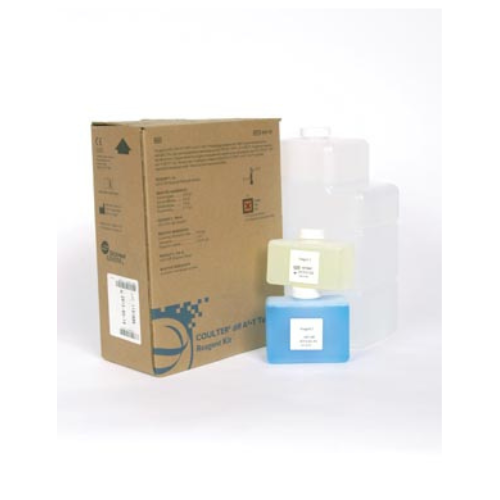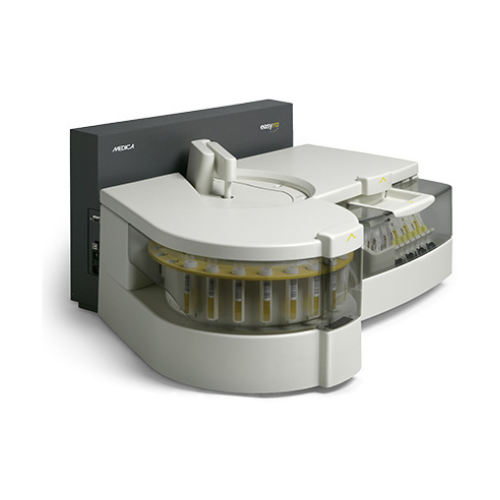For Business Use Only. Does Not Ship to Residential Addresses. For use inside an Analyzer, Sold Separately.
Beckman Coulter Diff AcT Tainer™ 4L Reagent
Product Code: BCK8547135A
Manufacturer: Beckman Coulter
Shipping Weight: 15.00lbs (6.80kg)
Diff AcT Tainer™ 4L Reagent
Intended Use
For use on COULTER ACT diff and ACT diff 2 hematology analyzers only. Refer to your instrument product manuals.
REAGENT 1 - COULTER Balanced Electrolyte Solution
For use as an isotonic buffered diluent for counting and sizing blood cells.
REAGENT 2 - COULTER Lytic Reagent
For use as a lytic agent for the quantitative determination of hemoglobin and for leukocyte counting and sizing.
REAGENT 3 - COULTER Shutdown Diluent
For use as a shutdown diluent for hematology analyzer components that come in contact with blood samples, including apertures.
Summary
Blood cell analysis comprises diluting a whole-blood sample with a solution that functions as a diluent. The diluent (Reagent 1) provides the ability to analyze portions of the diluted blood sample for different blood cell types, such as red blood cells and platelets. When combined with the lytic reagent (Reagent 2), the diluent (Reagent 1) is useful in the quantitative determination of hemoglobin, the enumeration of leukocytes (white blood cells), and the derivation of leukocyte subpopulations. The biodegradable shutdown diluent (Reagent 3) aids in the removal of protein buildup in the sensing orifices of the hematology analyzer.
Principle
The diluent (Reagent 1) is a chemical composition of organic buffers, anesthetics, and germicides in an osmotically balanced neutral solution that includes the following:
• Sodium chloride allows the diluent to become an electrolyte capable of conducting electrical current in an electronic analyzer and, along with Sodium Sulfate and Procaine Hydrochloric Acid, provides buffer for pH balance and cell component stabilization (that is, becoming an isotonic solution, stabilizing blood cell volume, and reducing turbidity in the measurement of hemoglobin).
• Dimethylolurea, an antiseptic, is for product preservation against microbial growth.
In this capacity, the diluent (Reagent 1) is useful for the determination of red blood cell and platelet measurements. Combined with the lytic reagent (Reagent 2), the diluent is useful in the determination of hemoglobin, the enumeration of leukocytes (white blood cells), and their differentiation into three populations (lymphocytes, mononuclear cells, and granulocytes).
The lytic reagent (Reagent 2) consists of quaternary ammonium salts whose surface active properties destroy the red cell membrane, thus lysing the red blood cells (stromatolyzation) and reducing the size of cellular debris to a level that does not interfere with leukocyte counts. The lytic reagent also causes a differential shrinkage of the leukocytes into predictable volume components, thus enabling the histogram differential (that is, lymphocytes, mononuclear cells, and granulocytes). Additionally, the reaction of the quaternary ammonium salts functions to reduce the amount of protein buildup in the sensing orifices of the instrument. Potassium cyanide is used to form a suitable chromagen for hemoglobin determination.
Blood proteins flowing through blood counting orifices (apertures) in a hematology analyzer over time accumulate around these openings to a point that the size of the orifices are minimized and eventually blocked. The proteolytic enzyme in the shutdown diluent (Reagent 3) reacts with and dissolves the protein in and around the apertures.











